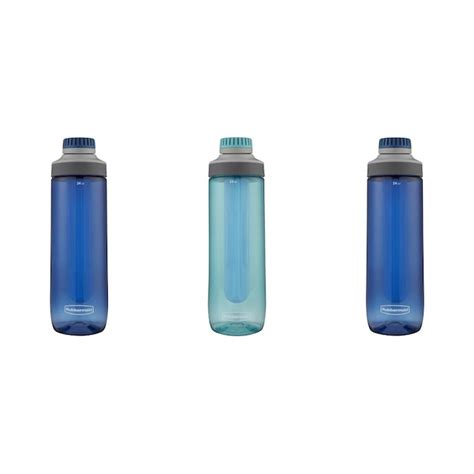How Many Quarters Fit In A 5 Gallon Water Jug
Arias News
Apr 01, 2025 · 4 min read

Table of Contents
How Many Quarters Fit in a 5-Gallon Water Jug? A Surprisingly Complex Question
This seemingly simple question – how many quarters fit in a 5-gallon water jug? – is surprisingly complex. It's not just a matter of calculating volumes; it delves into the fascinating world of irregular shapes, packing efficiency, and the surprising properties of coins. Let's dive into the details and explore different approaches to answer this question.
Understanding the Challenges
Before we start throwing numbers around, let's acknowledge the inherent difficulties:
- Irregular Shape: A 5-gallon water jug isn't a perfect geometric shape. It has a neck, a base, and curves that make precise volume calculations challenging.
- Quarter Irregularity: While quarters are designed to be uniform, slight variations in manufacturing inevitably occur. These small differences can accumulate and affect the overall packing efficiency.
- Packing Efficiency: The way quarters are arranged significantly impacts how many fit. Randomly tossing them in will result in significant empty spaces, while a carefully orchestrated packing strategy can maximize the number.
Method 1: Volume-Based Approximation
This approach attempts to estimate the number of quarters based on volume. It's the simplest but also the least accurate.
1. Finding the Volume of a Quarter
A US quarter has a diameter of approximately 0.955 inches and a thickness of 0.069 inches. We can approximate its volume using the formula for the volume of a cylinder:
V<sub>quarter</sub> = π * r<sup>2</sup> * h ≈ 3.14159 * (0.4775 in)<sup>2</sup> * (0.069 in) ≈ 0.049 cubic inches
2. Converting Gallons to Cubic Inches
1 US gallon is equivalent to 231 cubic inches. Therefore, a 5-gallon jug has a volume of:
V<sub>jug</sub> = 5 gallons * 231 cubic inches/gallon = 1155 cubic inches
3. Estimating the Number of Quarters
Dividing the jug's volume by the volume of a single quarter gives a rough estimate:
Number of quarters ≈ 1155 cubic inches / 0.049 cubic inches/quarter ≈ 23570 quarters
Important Note: This calculation is highly inaccurate. It ignores the empty space between quarters and assumes perfect packing efficiency, which is far from reality. The actual number will be significantly lower.
Method 2: Sphere Packing and Efficiency
A more sophisticated approach involves considering sphere packing. While quarters aren't perfect spheres, approximating them as such allows us to use established mathematical principles.
Sphere Packing Density
The densest possible arrangement of spheres (like our approximated quarters) is known as "random close packing," which achieves a packing density of around 64%. This means that approximately 64% of the jug's volume will be occupied by the quarters; the remaining 36% will be empty space.
Revised Estimation
Considering the 64% packing efficiency:
Effective volume = 1155 cubic inches * 0.64 ≈ 739.2 cubic inches
Number of quarters ≈ 739.2 cubic inches / 0.049 cubic inches/quarter ≈ 15086 quarters
Method 3: Experimental Approach (The Most Accurate)
The most accurate way to determine the number of quarters is through experimentation. This involves:
- Obtaining a 5-gallon water jug: Ensure it's a standard 5-gallon jug and not one with a unique shape.
- Gathering a large number of quarters: You will need several thousand quarters.
- Careful Filling: Gradually fill the jug with quarters, paying close attention to the packing process. Experiment with different packing techniques to maximize the number. You can try layering, shaking, and tapping to settle the quarters.
- Counting the Quarters: After filling the jug as much as possible, count the number of quarters carefully. This step might require multiple counting sessions to ensure accuracy.
This experimental approach, though laborious, offers the most reliable answer. The results will vary slightly depending on the specific jug used and the packing technique employed.
Factors Affecting the Result
Several factors beyond volume and packing efficiency can influence the final count:
- Jug Shape: As mentioned earlier, the shape of the 5-gallon jug dramatically affects the packing efficiency.
- Quarter Condition: Slightly worn or damaged quarters might pack more densely than brand new, pristine ones.
- Packing Technique: Different filling methods (pouring, layering, shaking) significantly impact the outcome.
- Environmental Factors: Temperature and humidity can slightly affect the volume of the quarters and the jug itself.
Conclusion: More Than Just a Number
While we can make estimations using volume calculations and sphere-packing models, the most accurate answer can only be obtained through experimentation. The journey to answer this seemingly simple question highlights the complexity of seemingly straightforward problems and introduces the fascinating fields of geometry, packing theory, and practical experimentation. The number itself (whether it's 15,000 or closer to 20,000) is less important than understanding the processes involved in arriving at an answer. The true value lies in the understanding gained through the process of investigation. This simple question opens the door to a much deeper understanding of mathematical principles and their real-world applications. The exercise demonstrates that even seemingly trivial questions can reveal complexities and opportunities for learning. Remember, accuracy demands careful consideration of all the influencing factors and, perhaps most importantly, a bit of hands-on experimentation.
Latest Posts
Latest Posts
-
How Much Is 64 Ounces In Gallons
Apr 02, 2025
-
How Many Times Can 8 Go Into 60
Apr 02, 2025
-
Do Subway Sandwiches Have Oil And Vinegar
Apr 02, 2025
-
Is Cornstarch And Baking Powder The Same
Apr 02, 2025
-
How Much Is 10000 Hours In Days
Apr 02, 2025
Related Post
Thank you for visiting our website which covers about How Many Quarters Fit In A 5 Gallon Water Jug . We hope the information provided has been useful to you. Feel free to contact us if you have any questions or need further assistance. See you next time and don't miss to bookmark.
